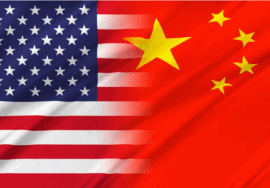The Role of the CEO in Digital Transformation
[ad_1]
The COVID-19 pandemic prompted manufacturers to accelerate their digital transformation and Industry 4.0 programs. Ultimately, these efforts will provide much greater visibility, resiliency, efficiency and flexibility, enabling them to compete more effectively for business. But the heart of every digital transformation is change management, and the key component of change management is a company’s employees. If employees do not follow the new way of working, then all these efforts will be in vain.
If employees are to go along with the new program, they must understand and believe in the benefits it will produce. These benefits must be both organizational and personal, because if they don’t believe that the new way of doing things is better for everyone, and if that change isn’t properly managed, they will likely fall back on what they are used to and what is comfortable.
Manufacturing CEOs must take the lead when it comes to change management, and especially for a change as large as digital transformation.
The Art of Managing Constant change
Businesses are always going through constant change. Even if the organization isn’t undergoing digital transformation, a CEO will need to deal with change and change management on an almost daily basis. But digital transformation accelerates the pace of change, so it requires special attention.
One of the biggest mistakes that a CEO makes when implementing significant change throughout the organization is to take a top-down approach. In today’s world where manufacturing organizations have not only been transformed by Kanban, Lean and other methodologies, employees are also much more vested in the outcome of key initiatives and have more decision making mandates in the day-to-day operations. In an environment where any factory employee can stop the line if they see a flaw, changes from the top that don’t include their input will receive a cold reception.
Instead, the CEO needs to ensure that the change process achieves buy-in from everyone, and the best way to do that is to ensure that everyone participates and contributes. For instance, if a new technology will require changes to processes on the shop floor, everyone affected needs to have a role to play in the the change process, starting from the evaluation phase.
Let’s say that the manufacturer has been operating using disconnected, custom-built systems, and the C-suite determines that the organization needs to standardize on a modern ERP platform. The employees who will be most affected by the new system should be part of the evaluation process. And when the system is chosen, employees need to have some influence in designing the parts of the change that affects their work. This approach will also contribute in building a company culture that will not only embrace change, but initiate and drive it.
Communication is the key to change management, but CEOs need to remember that good communication is more about talking and listening than it is telling others what to do.
Of course, the CEO won’t manage these changes on a day-to-day basis. Instead, the CEO will work with the COO and other senior leaders to ensure that all units of the business are working off the same playbook. And while this can feel frustrating, it is one of the most important functions. It is in these moments that a CEO ensures that the right message is passed on, and that there is mutual understanding of what needs to be done between business functions.
That role of ensuring interpretation is what keeps an entire organization working and moving forward together, because it provides visibility across the entire organization. It enables one to deftly explain to different teams why things have to happen in a particular way, and in a manner others can understand and get behind.
The CEO or COO steps in when things are not lining up, asks why and then works with the teams to find a solution to keep the project moving forward. It boils down to ensuring that miscommunications are identified and resolved. This also means that a CEO needs to be tough when individual priorities and objectives conflict with the company’s overall strategy and direction.
When managing a digital transformation, if the CEO feels like all they are doing is making sure that people are talking to each other, looking at the same information and pulling in the same direction, then they’re probably doing their job well. Without that communication and shared understanding, any disconnects will become bigger cracks that can fragment the business and destroy productivity and profitability. Again, as an organization prepares for change and, then, executes on it, it’s absolutely crucial that everyone knows they have a stake and a say, and that even if their input isn’t followed, everyone understands why a different path was chosen.
So, as manufacturers undergo digital transformation, CEOs cannot neglect change management. They must not only communicate where the company is going and why change is necessary, but must also involve the entire company in the process. Everyone will then work together to succeed.
[ad_2]
Source link










